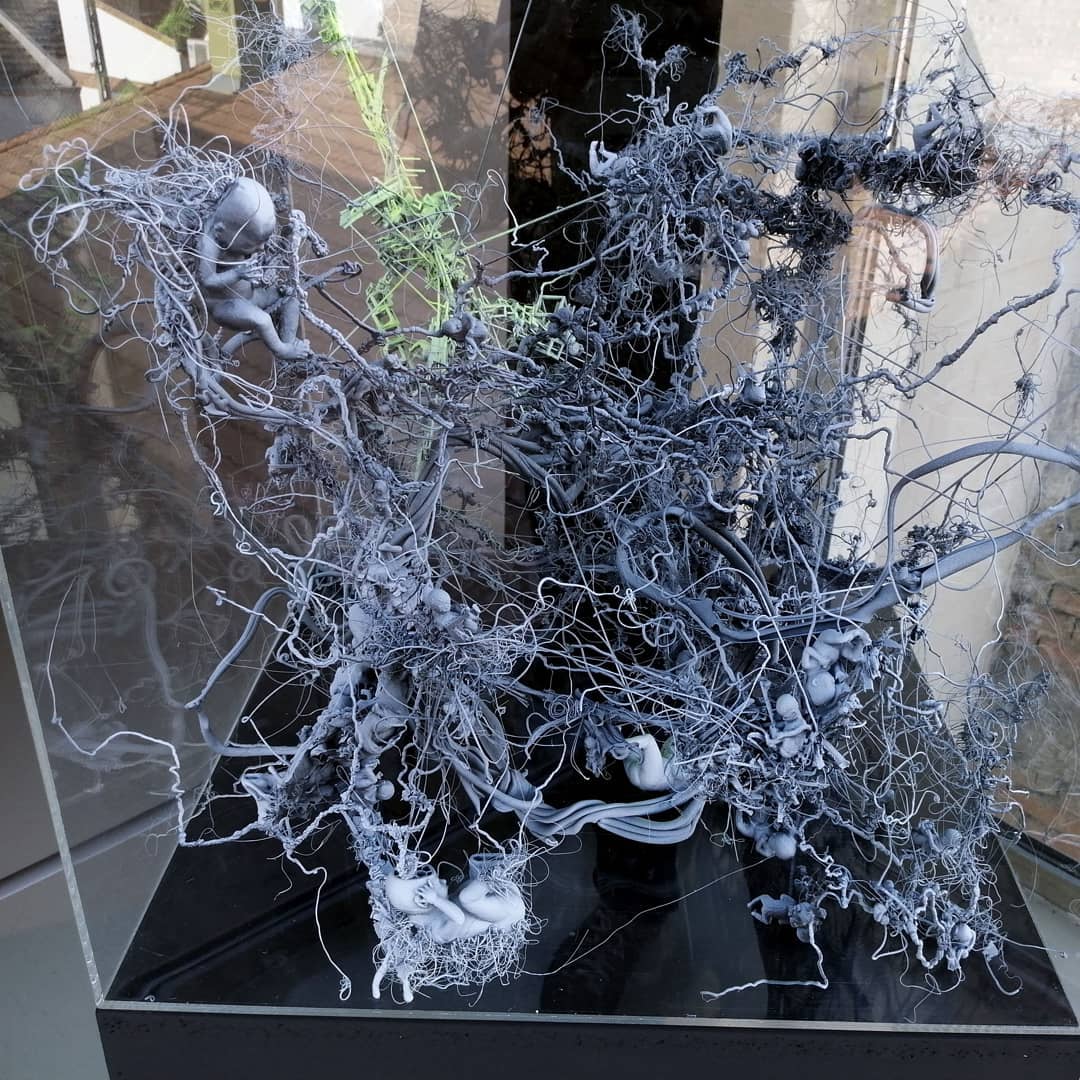
Korean artist Yong Ho Ji creates animal/human hybrids made out of recycled tires. Ji calls his variations “mutants” in order to refer to both their hybrid forms and their recycled medium. “My concept is mutation,” Ji says, “the end product is technically from nature; it is made from the white sap of latex trees but here it has changed. The color is black and the look is scary.”
Ji looks to create a variation of carnivorous, herbivorous and omnivorous animals, as well as arthropods, fish and hybrids of such animals. By pasting and reshaping strips of used tires onto molds and frames he makes himself, Ji mimics the way real skin and muscles move and hang on to animal’s skeletons. The process is labor intensive. However, his realistic, detailed approach makes his work that much more surreal.
Ji’s choice of materials and concepts alike poses interesting questions regarding mass production, technology and genetic engineering. While the constant production of new tires can be seen as a symbol of consumerism, Ji’s hybrids showcase the incessant human desire to “play God” and challenge nature’s will through advanced technologies.











 In his first exhibition in Hungary, Dmitry Kawarga's "post-human" sculptures and installations reflect on humanity's vulnerability. His "Anthropocentrism Toxicosis” series, in particular, is on display at the Ferenczy Museum, with works built with polymers and occasionally, usage of 3D-printing processes. The exhibition runs through Sept. 15.
In his first exhibition in Hungary, Dmitry Kawarga's "post-human" sculptures and installations reflect on humanity's vulnerability. His "Anthropocentrism Toxicosis” series, in particular, is on display at the Ferenczy Museum, with works built with polymers and occasionally, usage of 3D-printing processes. The exhibition runs through Sept. 15. Sculpting small-scale worlds is all in a day’s work for Korean artist
Sculpting small-scale worlds is all in a day’s work for Korean artist  Oakland, California based artist
Oakland, California based artist  Bonsai, the art of growing miniature trees, has a magic power to transport us to another world, a quality shared by
Bonsai, the art of growing miniature trees, has a magic power to transport us to another world, a quality shared by